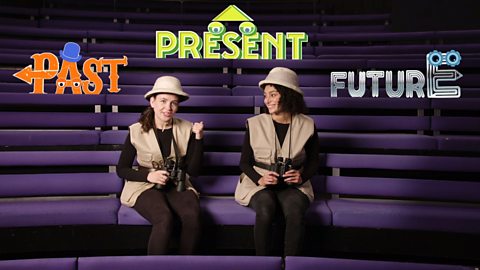Fun fact!
What do the following adjectives all have in common?
- lacklustre
- cold-blooded
- premeditated
- worthless
The answer is they were all invented by William Shakespeare in order to add detail to his scripts. When the exact word he wanted wasn’t available, he would quite often combine verbs and nouns to create new adjectives.
Introduction to adjectives
Adjectives describe nounA naming word for an object, idea, person or place. to tell you more about something.
Adjectives come in several varieties, including descriptive, quantitative, superlative and comparative.
Using adjectives is particularly important in descriptive writing.
Video about the uses of adjectives
Why do we use adjectives?
Adjectives can add detail to a noun (such as a person, place, or thing) to make descriptions clearer or more interesting.
Often, they appear directly before a noun in a sentence:
In the noisy town hall some lively discussions took place.
Adjectives can also appear after the noun in some sentences:
The corridor was clean and bright.
The adjectives above can be referred to as descriptive adjectives. These types of adjectives modify the noun in the sentence by adding more information about it.
Similarly, if you describe a noun using a number, this is called a quantitative adjective. These adjectives indicate how many or how much.
I have twenty pounds in my wallet.
There were three boys and two girls.
You were only supposed to eat half of the pizza.
Find the adjectives
Comparative adjectives
One way to describe nouns is by comparing them to something else. One cat might be fiercer, hungrier, faster, softer, fluffier or shyer than another.
The words describing the cat are called comparative adjectives and usually end in –er.
Here are some more examples:
Summer days are longer than winter ones.
My sunflower is taller than yours.
Identify the comparative adjective
Superlative adjectives
We can also compare nouns by using superlative adjectives, which mean that something has more of a particular quality than any other of its kind; that it can't be beaten. Superlative adjectives usually end in –est
She is the strongest player on the best team in the greatest league.
Find the superlative adjective
Other formations
Some very common adjectives form irregular comparatives and superlatives. Some of the most useful examples are:
Good \(\Rightarrow\) Better \(\Rightarrow\) Best
Bad \(\Rightarrow\) Worse \(\Rightarrow\) Worst
Many \(\Rightarrow\) More \(\Rightarrow\) Most
Little \(\Rightarrow\) Less \(\Rightarrow\) Least
Adjectives that don’t follow the -er and -est endings for their comparative and superlative forms are usually easy to spot. Any adjective of three or more syllables, such as damaging, fascinating or difficult, keeps its form and adds before it the word more for comparative and the most for superlative. Remembering to add ‘the’ before ‘most’ will help you keep in mind that a superlative should be the only one of its kind.
That exam was difficult.That exam was more difficult than the last one.That exam was the most difficult one we ever did.
Key points
Remember
Get the balance right when choosing adjectives in your writing: too many can be overwhelming for a reader; too few and your reader may not have a clear enough picture of what you are describing.
Test your knowledge
Identify all the adjectives
Adjectives quiz
More on Grammar
Find out more by working through a topic
- count8 of 8

- count1 of 8

- count2 of 8

- count3 of 8
